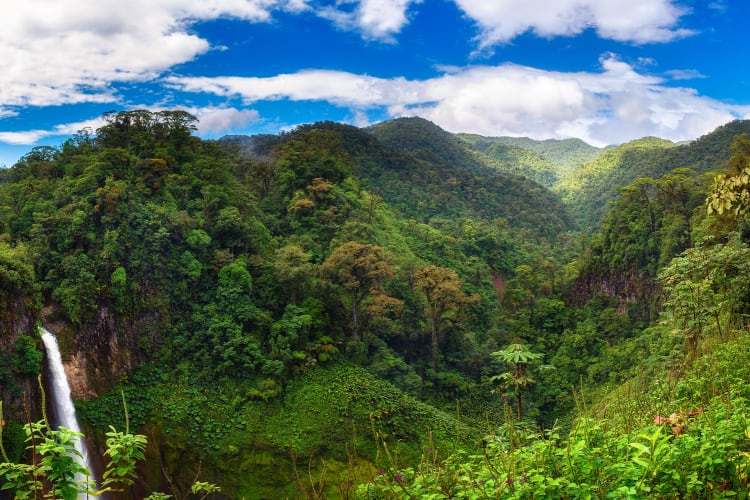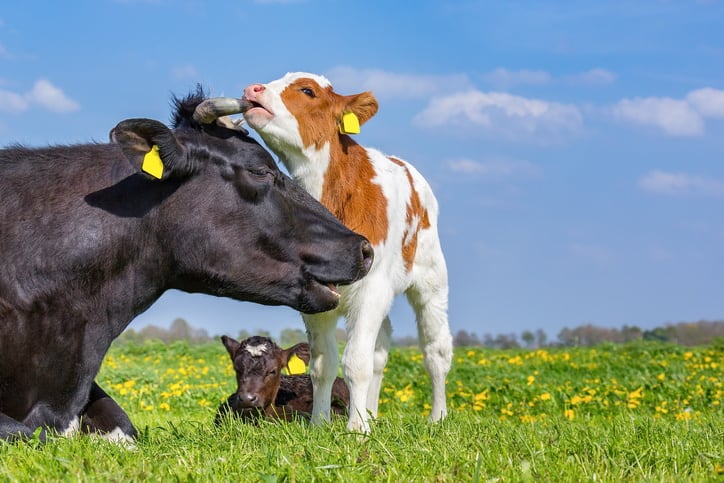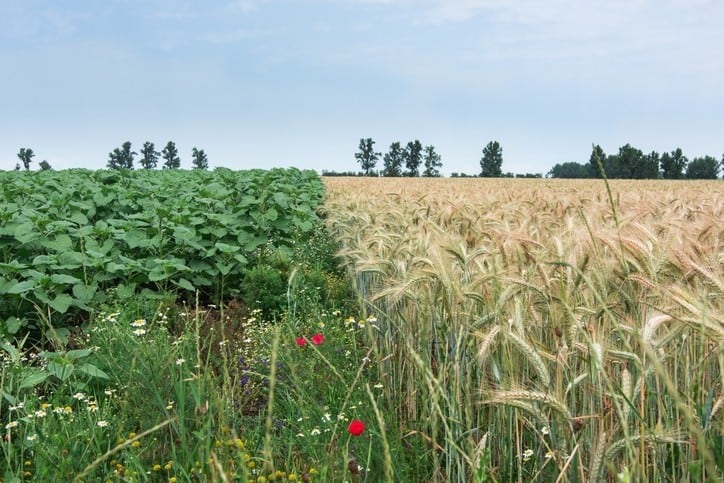The food system sits at an unhappy intersection. It is both significantly exposed to, and a significant contributor to, climate change.
If both direct and indirect emissions are taken into account, over 30% of the European Union’s GHG emissions come from the food and drink sector, according to environmental campaign group Friends of the Earth.
Meanwhile, extreme weather events like droughts and flooding have the potential to disrupt the industry’s global supply chains, increasing volatility in commodities and potentially hitting the supply of raw materials.
As data from the Met Office and the World Food Programme reveal, areas across Africa, the Middle East, Asia and Latin America are already vulnerable to food insecurity. WFP reports that changes in climactic conditions have affected the production of some staple crops and ‘future climate change threatens to exasperate this’.
The integrated nature of global supply chains, which are reliant on internationally sourced crops like cocoa, coffee and palm oil, leave large food makers in Europe and North America – regions the WFP says food insecurity is negligible – exposed.
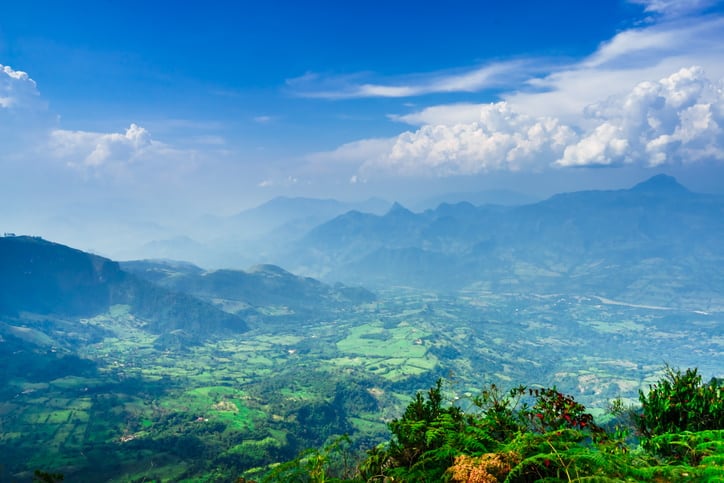
“This has consequences, this has business consequences,” Benjamin Ware, Nestlé Head of Sustainable Sourcing and Climate Diversity, stressed.
Speaking to journalists at a recent workshop, Ware emphasised that taking action to mitigate the food industry’s climate impact is ‘truly a business matter for the survival of the economy at large’ and ‘not only a green thing’.
The Swiss food group has laid out its roadmap to net zero, including a series of important milestones. It aims to cut its GHG footprint by 20% by 2025; 50% by 2030 and 100% by 2050, in line with the Paris Agreement and the UN 1.5° pledge.
“We will achieve this through carbon reductions and removals… and not so much through the use of offsets and carbon credits,” Ware predicted.
Nestlé has calculated its annual carbon footprint at 92m tonnes of CO2e. Seventy percent of this footprint lies in the raw materials it sources – 28m tonnes of agricultural materials a year from 86 countries.
While work is being undertaken to cut the footprint of the company’s own operations – switching to renewable energy for instance - success will ultimately depend on Nestlé’s ability to tackle scope 3 emissions, those that originate in the supply chain.
Here, Nestlé believes that two approaches could prove particularly fruitful: the promotion of regenerative agricultural practices to build soil health and a ‘forest positive’ ambition. “This is where the solutions are for us and this is where the focus is for us,” Ware said.
Regenerative agriculture: Building healthy soils
Alongside climate change, soil health also stands as a threat to agricultural yields. The UN’s Food and Agriculture Organization estimates that soil erosion can result in a reduction in crop yield of up to 50%. Degraded soils also increase exposure to other stressors, such as water insecurity.
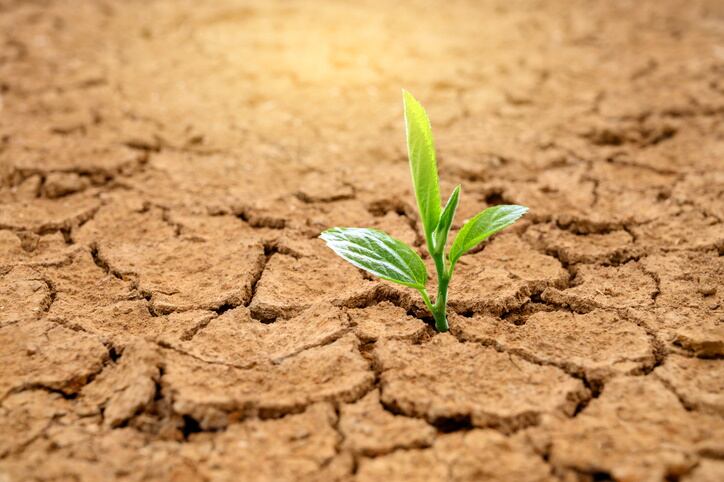
FAO data suggest one-third of the planet’s soils are already eroded – and over 90% could become degraded by 2050. Currently, the equivalent of one soccer pitch of soil is eroded every five seconds.
One of the major causes of soil erosion – like climate change – is intensive agriculture. The FAO reports that soil erosion on arable or intensively grazed lands is between 100 and 1000 times higher than natural erosion rates.
“We want to move from degraded soils to restoring fertility,” Pascal Chapot, Nestlé’s Group Head of Sustainable Agriculture revealed, pointing to the potential of regenerative agriculture.
“The idea is to scale up practices that will contribute to soil fertility, which means restoring the organic matter in the soil,” he told the digital event. “All this revolves around soil. If we manage to restore soil fertility, we will have a lot of benefits… at a landscape level.”
Soil organic matter (SOM) is primarily made up of carbon, hydrogen and oxygen and consists of plant and animal debris, soil microbes and the substances they synthesise. SOM improves soil structure and reduces erosion. It can work against drought by percolating and storing water, and can draw carbon down from the atmosphere into the earth.
This can, in turn, help address carbon emissions associated with production. “The soil can be a net emitter or a carbon sink,” Chapot explained.
While there is not currently a definitive definition of ‘regenerative agriculture’, practices include minimum or no tillage, crop rotation, well-managed grazing versus industrial feed lots, and increasing soil fertility through biological means such as the use of cover cropping.
So what does regenerative agriculture mean for Nestlé? Chapot said that a ‘one size fits all’ approach ‘does not apply’. “Where you see a list of regenerative practices, do not think that a farmer has to apply all of them,” he said.
However, he highlighted the importance of covered soil, a reduction in tillage and a reduction in the use of chemicals and pointed to Nestlé projects that have increased the use of intercropping, supporting not only soil fertility but also building more resilient farmer incomes.
Nestlé’s approach will be both ‘pragmatic’ and ‘science-based’, he stressed.
“We will help farmers to change from conventional to regenerative… We need to be careful and localise our solutions,” the agricultural expert noted.
“It is important to see it as a journey, it’s not black or white, it will evolve over time and it’s a collaborative journey.”
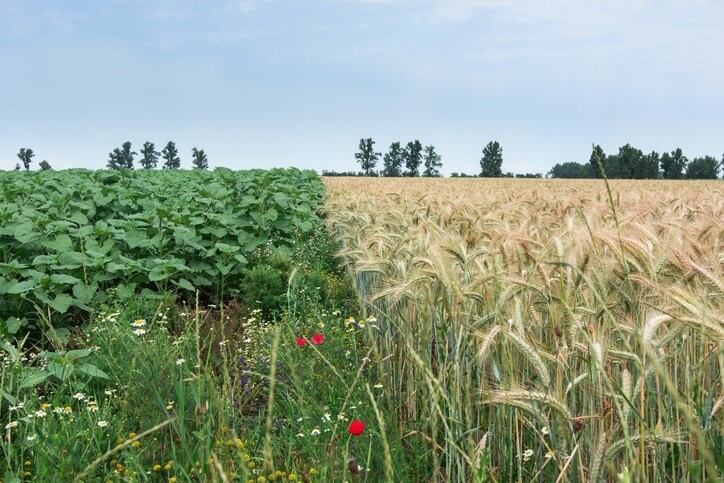
From deforestation-free to 'forest positive'
Deforestation and land-use change are also big contributors to global heating. Forests store large amounts of carbon and the plants within them absorb carbon dioxide as they grow.
Research from the World Resources Institute, averaged over 2015-2017, concludes that global loss of tropical forests contributed about 4.8 billion tonnes of carbon dioxide per year.
Forests cover about 30% of the planet’s landmass – but they are shrinking at an alarming rate. According to the World Bank, between 1990 and 2015 there has been a 3% decline forested land globally – that equates to 1.3 million square kilometres, or an area roughly the size of South Africa. Much deforestation has been driven by the growing demand for agricultural commodities, such as palm oil, soy and cocoa.
“Inaction is not an option. Forests are being cut, there are massive fires around the world… Forests are the lungs of the planet. We look on them not only as a solution for what we want to do with climate change, but as part of our body," Ware said.
When Nestlé thinks about forests, he continued, it is through ‘many angles we don’t necessarily see when we think trees’, including the livelihoods supported by the agro-forestry landscape.
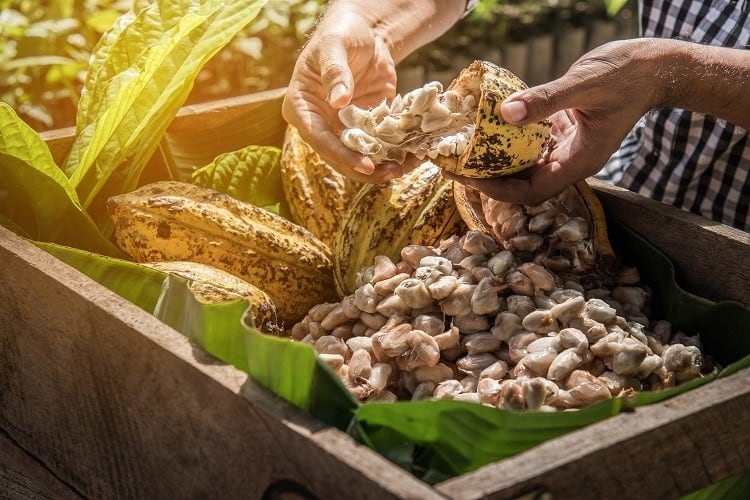
For the past decade Nestlé has been in a ‘race’ to achieve deforestation-free status for its key commodities. The company has taken a ‘tool kit’ approach that includes certification, collaboration with NGOs and other stakeholders, transparent reporting structures and developments like the use of satellite technology.
According to Emily Kunen, Global Sustainable Sourcing Leader, Forests, this tech development – adopted in 2019 – has been a ‘gamechanger’ in supply chain monitoring.
Nestlé has, nevertheless, come short of its goal to be 100% deforestation-free by 2020. By the end of 2020, 90% of the group’s key commodities were verified deforestation-free, Kunen revealed. “We remain committed to achieving 100% deforestation-free by the end of next year,” she told event attendees. “We’ve learned a lot about what companies like Nestlé can do to protect forests.”
The company is already looking beyond this achievement to the next step. “We are in a position to evolve the term deforestation-free to forest positive… We know we don’t have all the answers but we have to be more forward looking.”
Kunen illustrated her point by highlighting Nestlé’s involvement in a project to protect and restore the Cavally forest reserve in Côte d’Ivoire. A collaboration between Nestlé, NGO Earthworm and the Ivorian Ministry of Waters and Forests (MINEF), the national forestry agency (SODEFOR), the project is centred around farmer engagement rather than simply evicting smallholders operating illegally in the area.
The CHF2.5m scheme aims to ‘conserve and restore’ by ‘protecting’ existing forest, ‘restoring’ degraded forest and, ultimately, ‘increasing resilience and improving livelihoods’, Kunen explained.
Bringing together issues around deforestation, human rights and livelihoods in this way is an important unlock for Nestlé and its ‘forest positive’ ambition. It is hoped that this in turn will help lower the carbon footprint of the world’s largest food maker.

